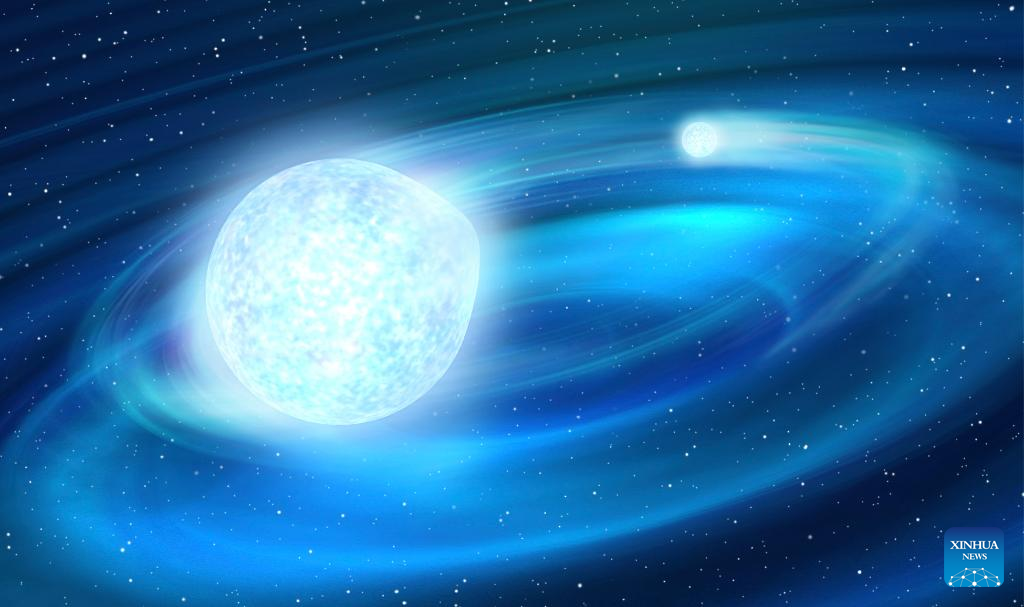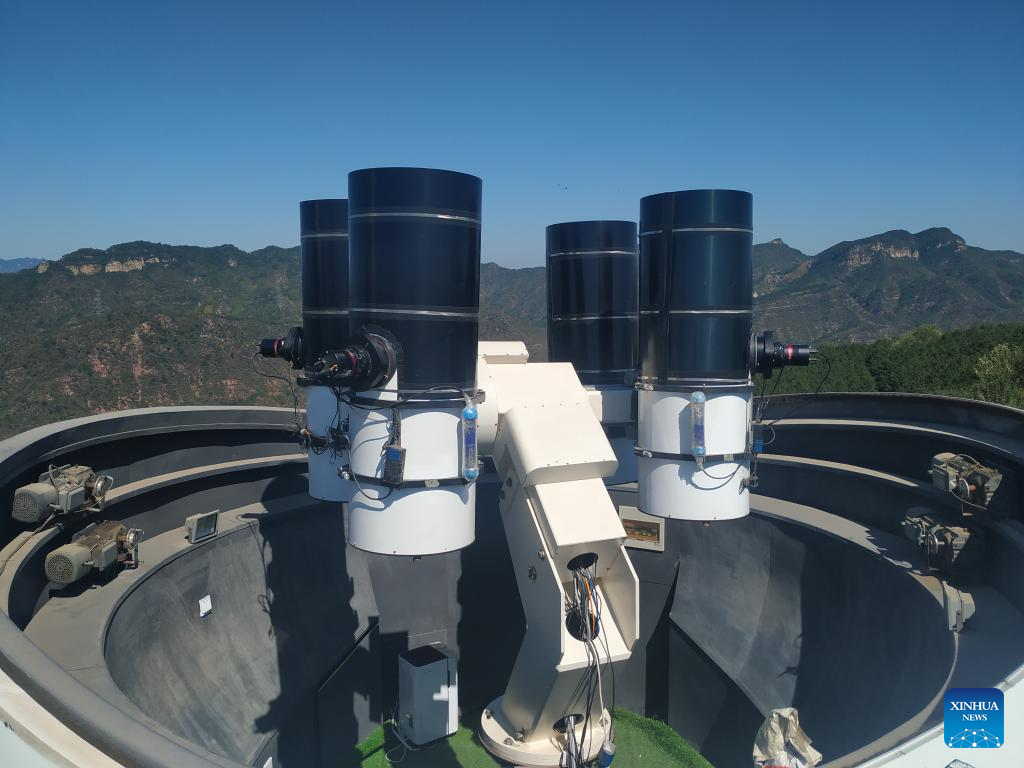
This image depicted by artist Yu Jingchuan from the Beijing Planetarium in December 2023 shows the TMTS J0526 binary star system. The left larger star in the image represents the hot subdwarf star, and the right smaller one represents the white dwarf star. (Tsinghua University/Handout via Xinhua)
BEIJING, Feb. 9 (Xinhua) -- Scientists recently discovered a binary star system consisting of a white dwarf and a hot subdwarf. The two stars were monitored orbiting each other at a record-breaking speed.
They are poised to generate strong gravitational wave radiation in the milli-Hertz frequency, which is expected to be detected by future space-based gravitational wave observatories.
The discovery made by Professor Wang Xiaofeng's team at Tsinghua University and his collaborators by using the Tsinghua University-Ma Huateng Telescope for Survey (TMTS), located at the Xinglong Observatory of the National Astronomical Observatories in north China's Hebei Province, was published online in Nature Astronomy on Friday.
The team discovered a very unique 20.5-minute orbital-period binary system, known as TMTS J0526, about 2,760 light years from Earth. The system harbors a carbon-oxygen white dwarf star and a low-mass subdwarf B star with a mass of only 0.33 solar mass.
The hot subdwarf of the TMTS J0526 system has a radius only seven times that of Earth, representing the star with the smallest volume ever known, said Lin Jie, a key member of the research team.
"This discovery has identified an important source for future space-based gravitational wave detection. It verifies the theoretical prediction of the formation of such a special binary system proposed by the team of Han Zhanwen, an academician of Chinese Academy of Sciences, from the Yunnan Observatory in 2003," Wang Xiaofeng said.
"This discovery can help us better understand and improve the theory of star evolution, which is the cornerstone of our understanding of the evolution of the universe," he added.
The TMTS is a uniquely designed multi-telescope optical survey instrument established by Wang's team with the support from Ma Huateng Foundation and Tsinghua University.
Since it went into operation in 2020, the TMTS has been scanning the northern celestial hemisphere with a cadence of about one minute.
By the end of 2023, TMTS has accumulated photometric data for over 27 million stars, which includes dozens of valuable short-period variable sources. Among them, TMTS J0526 stands out as one of the sources with the shortest period. ■

This photo taken in January 2020 shows the Tsinghua University-Ma Huateng Telescope for Survey (TMTS), located at the Xinglong Observatory of the National Astronomical Observatories in north China's Hebei Province. (Tsinghua University/Handout via Xinhua)



